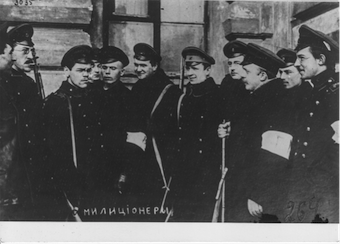

|
The Downfall of the Monarchy  People's Militia Informed about the mutiny in Petrograd, the Tsar sought to rally loyalist troops and march against the revolutionary capital. But on 1 March General Alexeev, the Commander-in-Chief, called off the counter-revolutionary expedition, partly out of fear of losing more troops to the mutiny, partly in the conviction that the best hope for the war campaign was a Duma government. By the next day it was clear that nothing less than the Tsar's abdication would save the army and the war campaign: all his senior generals told him so. Nicholas agreed to abdicate not only for himself but for his son in favour of the Grand Duke Mikhail, but when this was announced there were further demonstrations calling for the downfall of the monarchy, and Mikhail was persuaded to step down. The end of the monarchy was marked by scenes of rejoicing throughout the empire. Symbols of monarchical power (emblems, coats of arms, double-headed eagles, tsarist statues) were destroyed. The monarchy was dead: all its institutions of support (the bureaucracy, the police, the church) collapsed virtually overnight. |
© 2014 Orlando Figes | All Rights Reserved